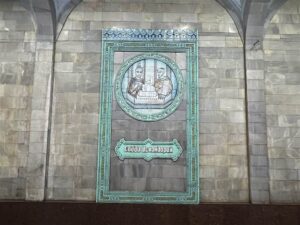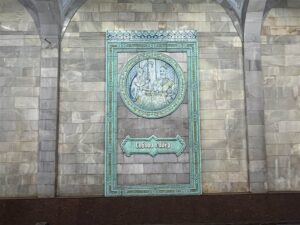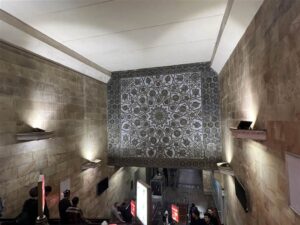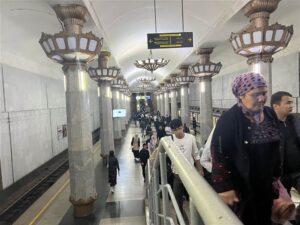Ubiquitously Uzbekistan – The Metro Art of Tashkent

Time stopped at 5:23am, April 26th 1966 in Uzbekistan. An earthquake with a magnitude of 7.5 on the Richter scale and a depth of 3-8 kilometers shook the nation and shattered the infrastructures of Tashkent. The damage was so extensive that it rendered 300,000 homeless.
One of the most determinative events of Uzbekistan in its 20th century history was the great earthquake of 1966. Tashkent, being the epicenter of the earthquake, suffered the most severe damage. In Tashkent’s plans for post-earthquake reconstruction in 1968, the metro system was going to be a major addition in the city’s new infrastructure. The Soviets believed in good transportation systems that would boost its production capacity, and cities of over one million in population had metro systems. Tashkent’s metro was the first such infrastructure in Central Asia. Construction began in 1972 and the first line completed in 1977.
The Construction of Tashkent’s Metro System
Because the Uzbeks intend the metro system to be a bomb shelter in the case of bombings, the metro system was not open for photography until very recently, in 2018. It was fortunate that we were able to take photographs of the beautiful artwork inside the station when we visited.
Although built in the typical Soviet style, the metro stations were injected with some impressive creative elements. Many of the metro stops in the system are adorned with artwork, or other forms of in-station design. Some of them create a classic 19th century ambiance in the station. Some are clean and modern. Others show a sense of the postmodern. The special stations stand clearly for the positive role of art in the urban space.

At the time when these artworks were installed, the idea itself was forward-thinking. Needless to say, the same in the Moscow metro precedes that of Tashkent’s. Moscow’s metro art is also much more elaborate. Unlike the grandiosity of Moscow’s metro art, Tashkent’s metro art is humbler but not less sophisticated. From these artworks a sense of vitality emanates, lifting the mood of an otherwise mundane, drab and perhaps typically cold atmosphere in Soviet-style underground, which at every turn expresses an old-fashioned sense of modernity. They were there as artistic expressions in a public space, the celebration of Uzbek history and culture, and not so much a show of national or ideological prowess. Well, at least no longer.

As such, the metro stations of Tashkent are themselves tourist attractions. It was also perfect for the rainy day that greeted us in our first day in Uzbekistan.
Each trip of the metro costs a flat fee of 1,400 SOM (price as of July 2023). You will receive a paper ticket, and you must scan the code on the ticket when you enter the station.
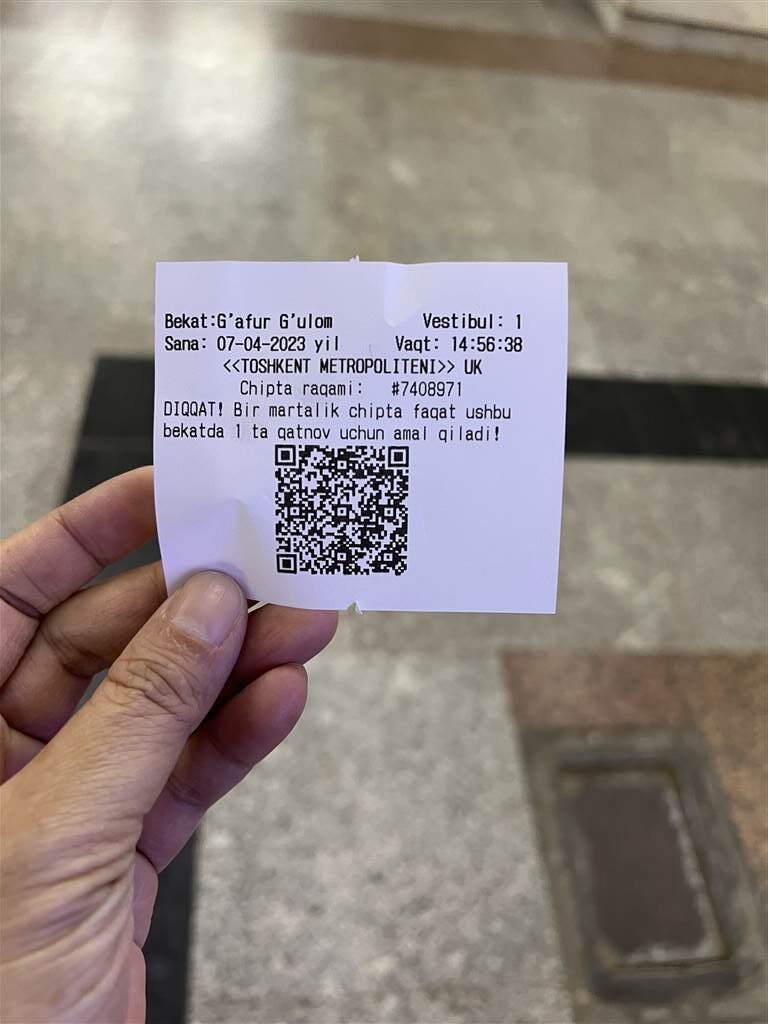
For ease of reference, I include here the touring map of the special stations. If you go through the metro system quickly, it is possible to visit all the special stations within two to three hours.
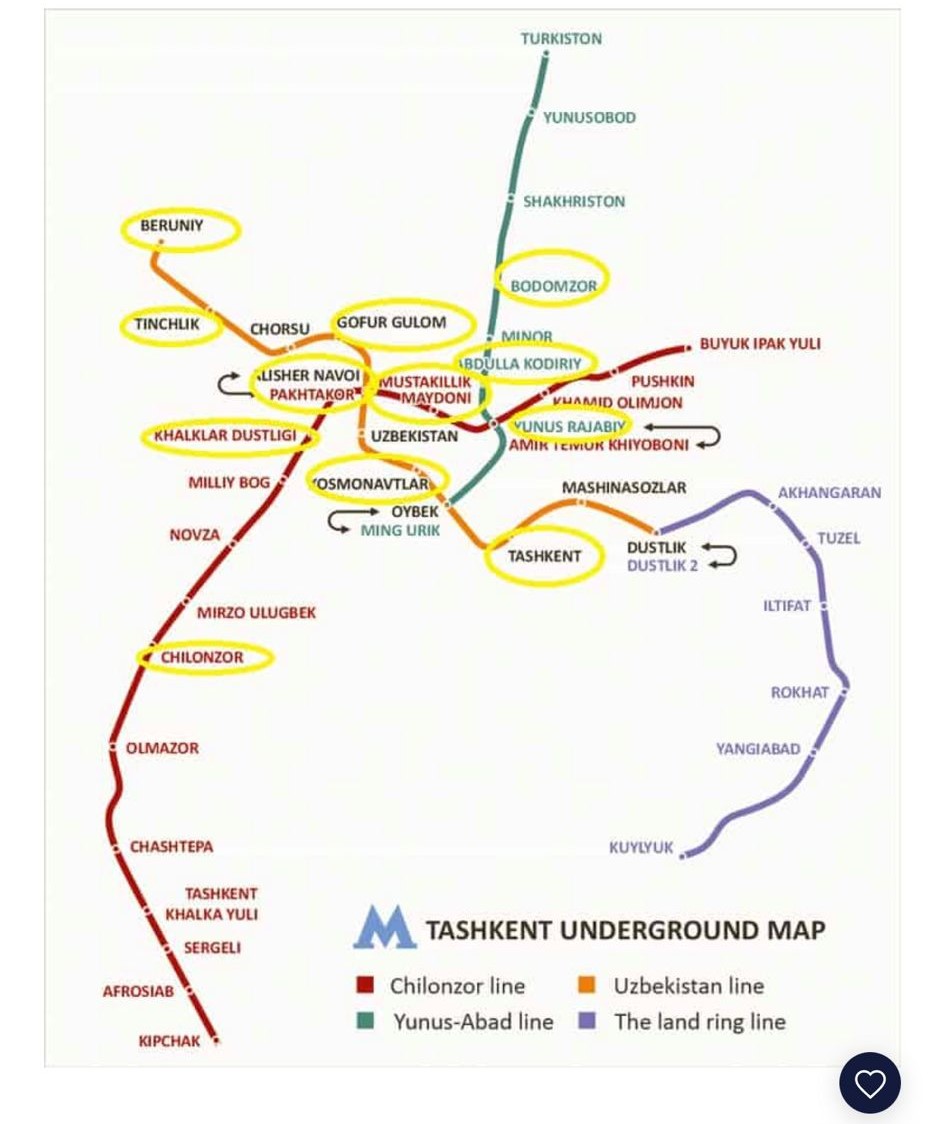
We probably went through some of them in an hour or so.
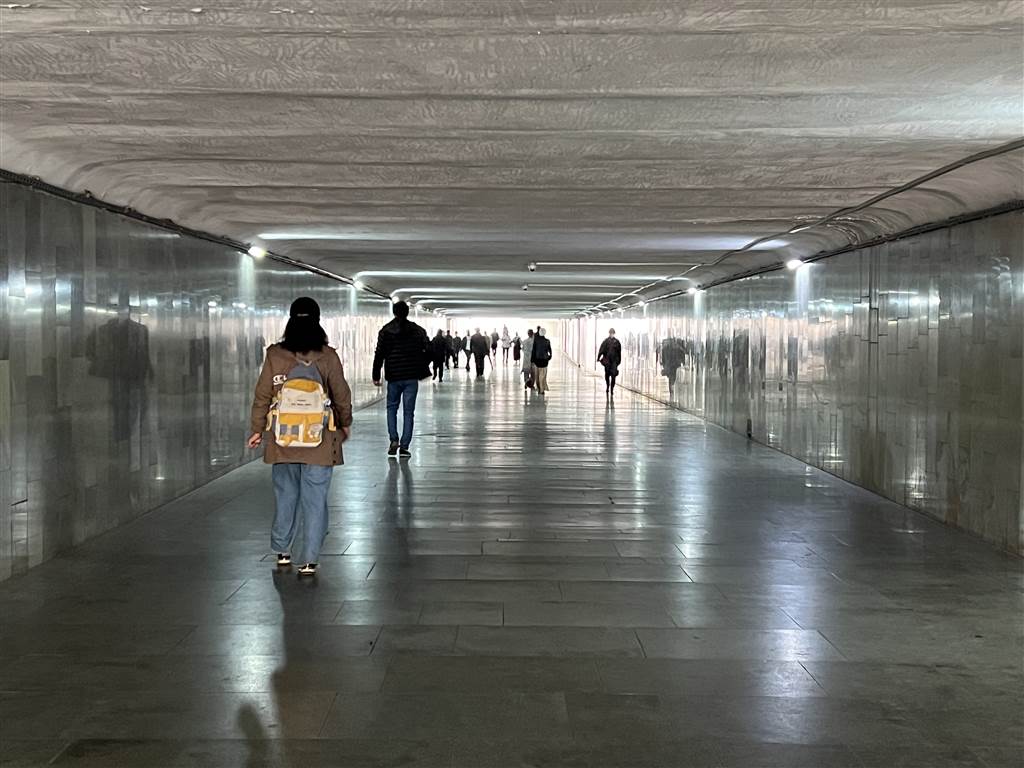
Some of my favorite metro art:
The art-adorned metro stations of Tashkent are all unique. Each of them has a specific theme and features the work of different artists.
Pakhtakhor Station
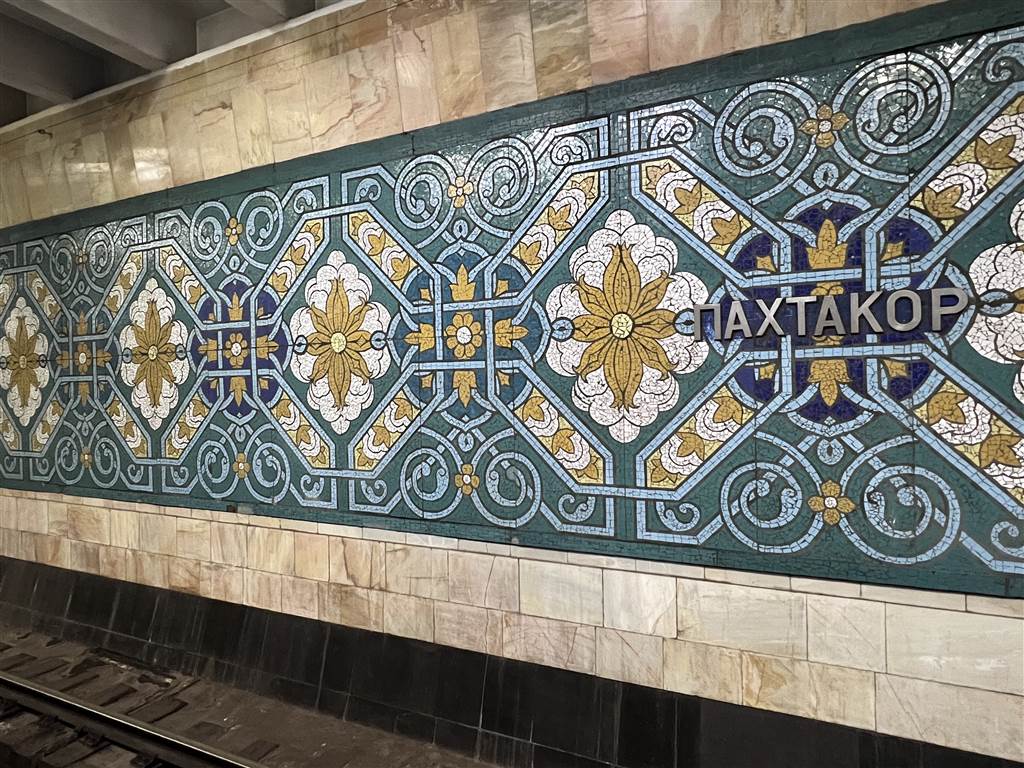
Of all of the metro art that we have seen, I like the one at Pakhtakhor Station the most. I like it for the characteristically Uzbek blue / teal theme. Beautiful mosaics line the walls of the station in colorful patterns. The pattern is supposed to show cotton, which was a major crop of Uzbekistan. Indeed, cotton is featured in more than one metro station.
Alisher Navoi
Alisher Navai was a Timurid poet, writer, statesman, linguist, mystic and painter. As a turkic he wrote (mostly) in his own Chagatai Turkic, and he preferred Turkic over Persian, which was in prevalent use in Central Asia during the 15th century. His poetry was revolutionary for Chagatai literature. Finally, a whole region Navoi in Uzbekistan is also a tribute to him.
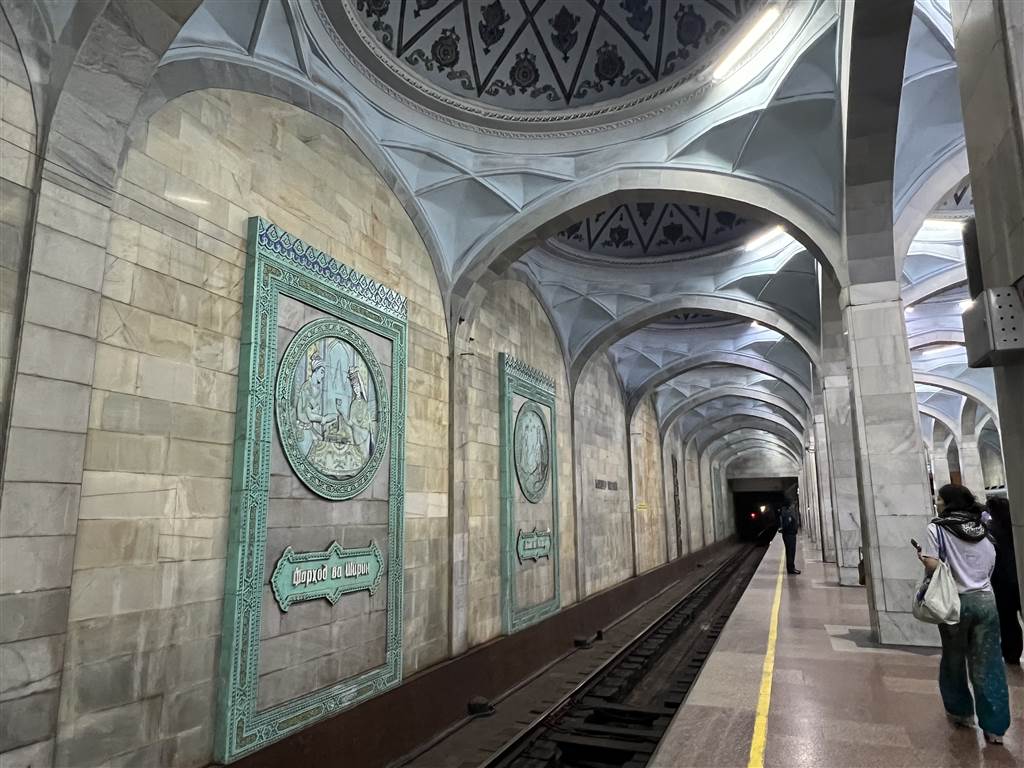
In the station, the bas reliefs depict scenes in one of Navoi’s literary works, Khamsa. They are five of the writer’s epic poems in Turkic. The sculptor Ahmet Shaymuradov spent four years creating these bas reliefs.
I include here an excerpt of Alisher Navoi’s poem, taken from Uzbekistan: The Golden Road to Samarkand:
Truthful speech is the wise man’s token.
But some truths wisely remain unspoken.
Learning is knowledge acquired in small portions,
As drops make the rivers that flow to the oceans.
Seek from others the knowledge they own,
Never rely on thy powers alone.
Gafur Gulom
The Gafur Gulom metro station is named after Uzbek writer Gafur Gulom. During the Soviet times, he was Uzbekistan SSR’s National Poet. The artist behind the stately columns in the station is S. Sultonmuradov. The artwork on the walls are very interesting, perhaps almost in the veins of the futuristic.

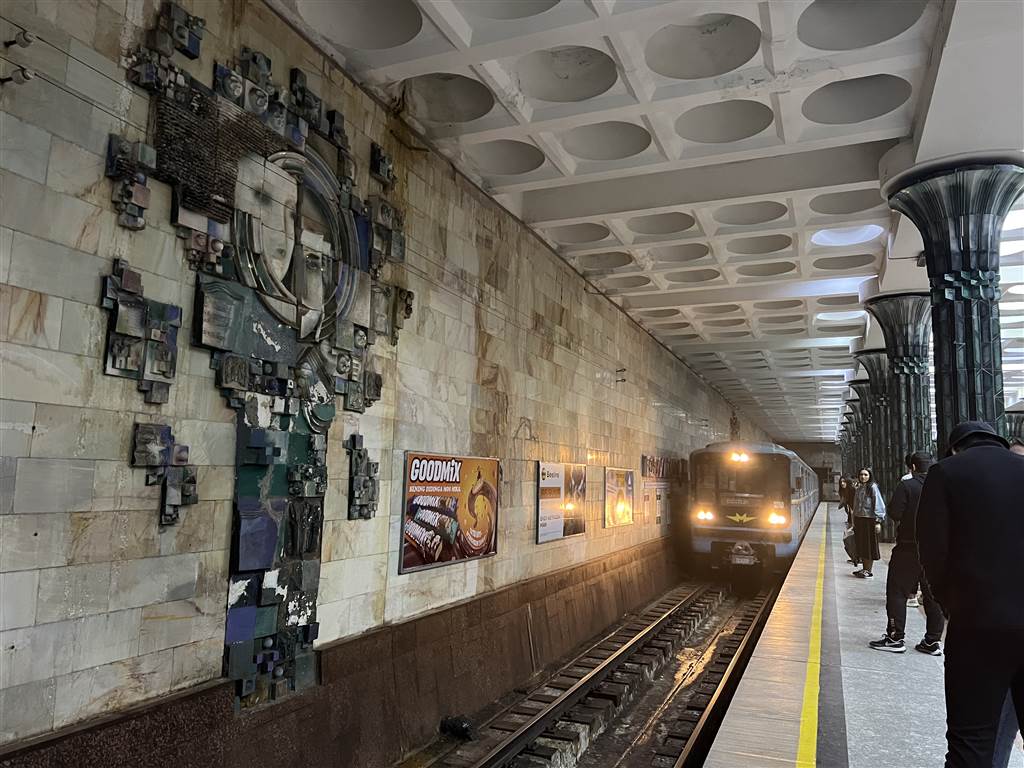
Chilonzor
Chilonzor features large, round and ornate chandeliers hanging from its ceiling.
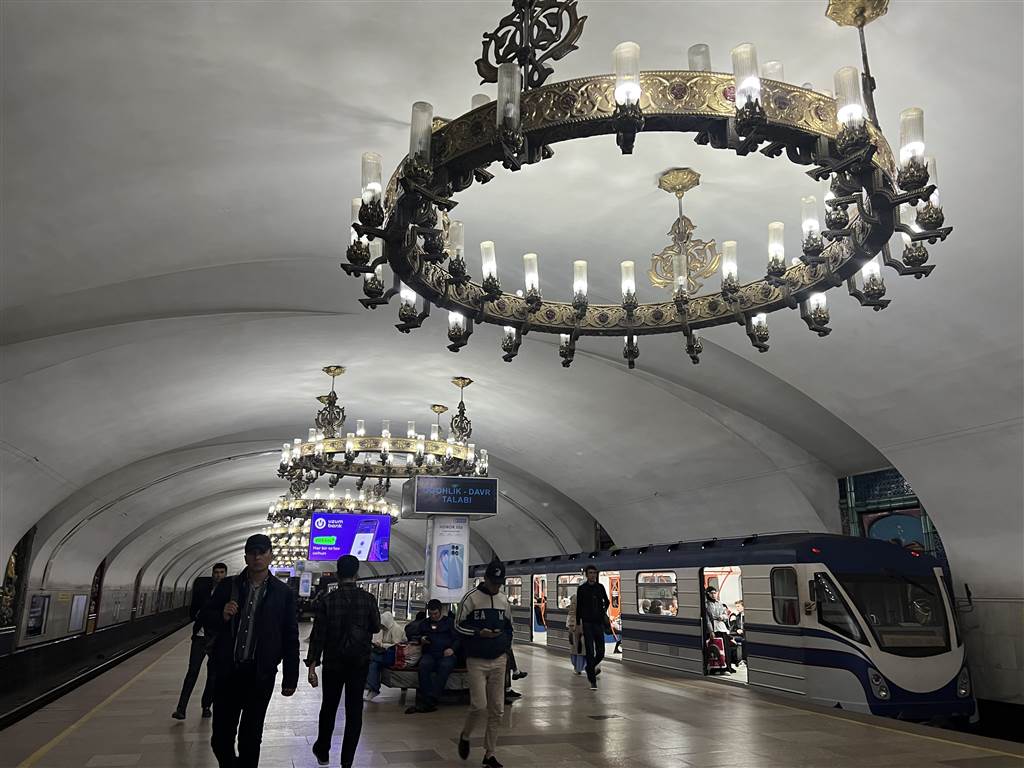
The artwork of choice in the station are clay renditions of traditional aspects of Uzbek life, the rustic joy of farming.
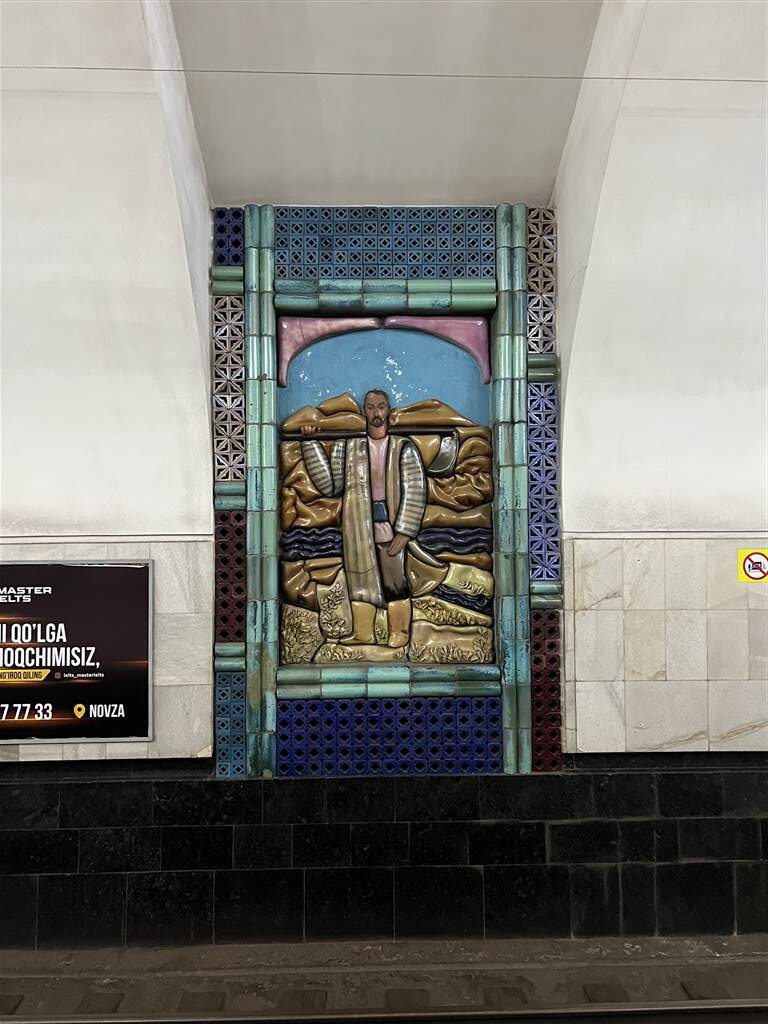

Mustaqilliq Maidoni
Mustaqilliq Maidoni is the station that leads to the Independent Square of Tashkent, formerly Lenin Square. According to Angelo Zinna’s blog post, “The flooring is decorated with star patterns symbolizing the successes of Soviet space explorers.”
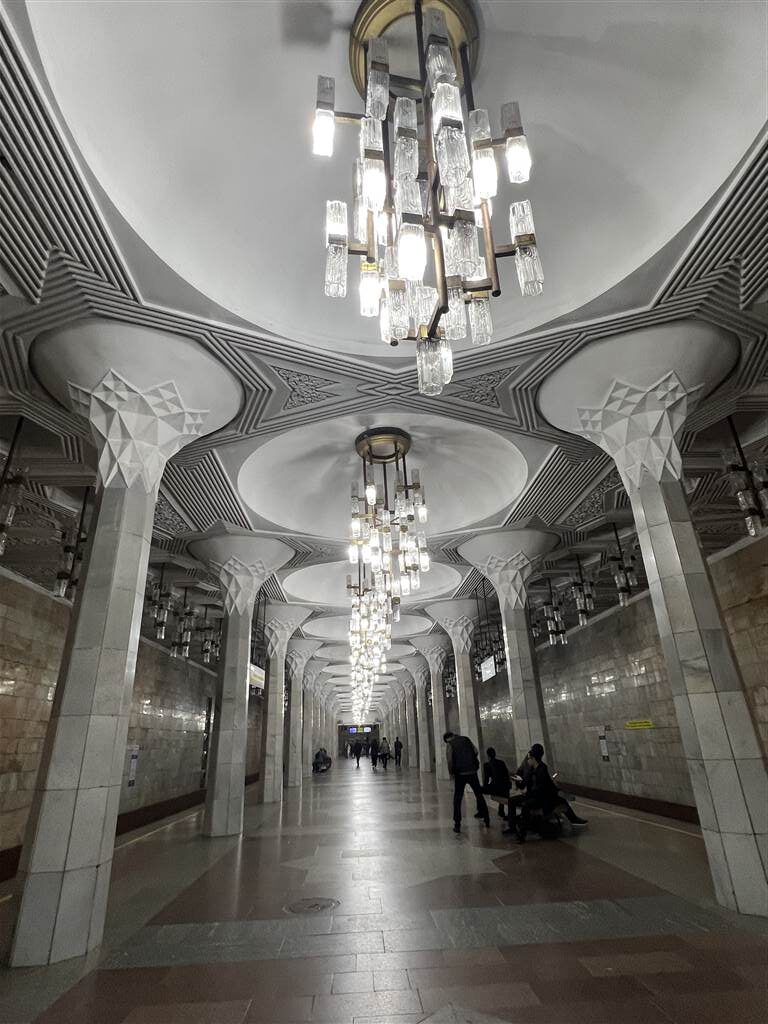
I certainly did not understand the significance of the patterns on the floor, as one would naturally be drawn immediately to the 19th century-esque elegance that breathes in this station. Again, Angelo Zinna explains that the station was “built almost entirely with marble blocks coming from the Kizil Kum desert in Western Uzbekistan.”

Bodomzor
The Bodomzor Station began service in 2001 and perhaps that is the reason why its décor is in a notably different style as compared to the rest of the stations I have seen.
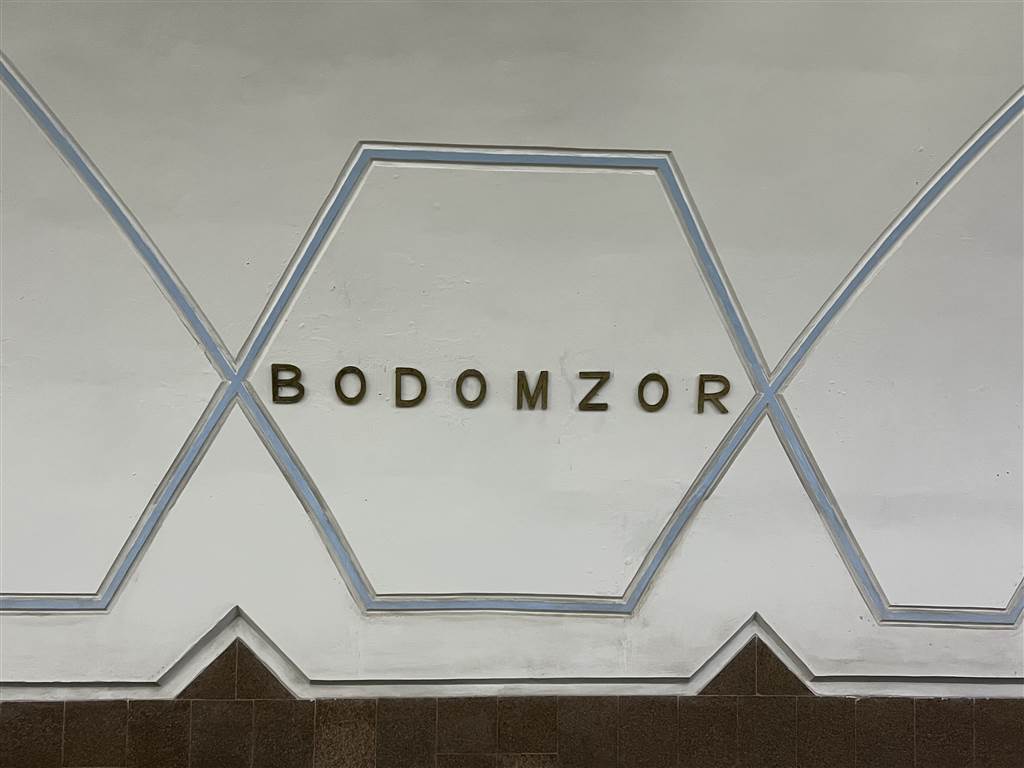
The station shows just lines that make some geometrical shapes. Along with the special lighting effect, these line create an ambiance that is so modern that it felt futuristic. It reminds me of a space station even.
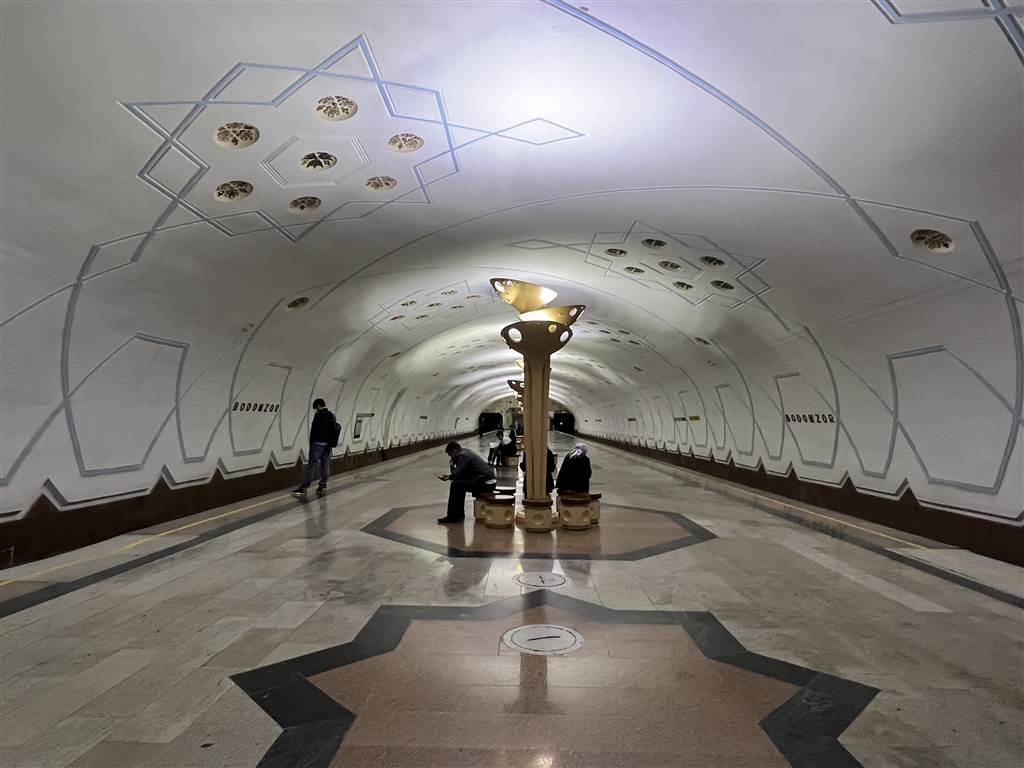
Sources
Angelo Zinna, To See the Best Art and Architecture in Tashkent, Ride the Subway, Metador Network.
Calum Macleod, Uzbekistan: the Golden Road to Samarkand (2014).
The Wikipedia on Gafur Gulom Station of the Tashkent Metro.
The Wikipedia on Ali-Shir Nava’I, at https://en.wikipedia.org/wiki/Ali-Shir_Nava%27i
Uzbek Travel, About Uzbekistan, Transport, Metro.
Nadezhda Dukhovny, The Times of Israel, Ancient and unique Uzbekistan: Alisher Navoi.
Hyperallergic, A Tour Through Tashkent’s Art-Filled Subway.


